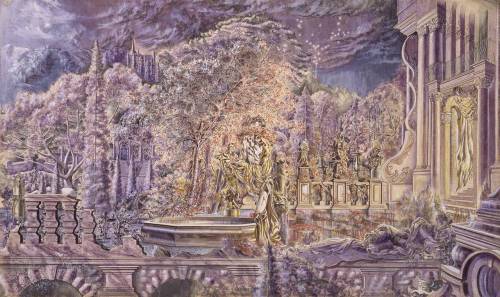
A junkie, a dandy, a melancholy wit but above all an obsessive painter surviving on nothing but
 laudanum and boiled eggs as he works through the night, Robin Ironside on right
laudanum and boiled eggs as he works through the night, Robin Ironside on right is a figure fit for 19th-century Paris. In conversation he comes across as romantic, wayward and despairing. In photographs, with his black suit and high hair, he looks like the young Hector Berlioz.
is a figure fit for 19th-century Paris. In conversation he comes across as romantic, wayward and despairing. In photographs, with his black suit and high hair, he looks like the young Hector Berlioz.
For Ironside is not a name on many people's lips, if anyone speaks of him these days, and his paintings have scarcely been shown since 1965, when he died of a heart attack at the age of 53. The catalogue to this revival at Pallant House Gallery suggests that the last glimpse was more or less the only one: a few images included in a show on the influence of William Blake at Tate Britain in 2006.
What did for Ironside as an artist? In one sense the answer is obvious enough. His paintings are small, febrile, rickety, oppressively intense. You need a magnifying glass to see them in serious detail. The aesthetic can be wildly florid – he is a great exaggerator – and there is no doubt that he puts atmosphere before draughtsmanship in many a work. But as often as not he turns all this to advantage, and for all the conflated hints of romanticism, symbolism and surrealism, his work is singular in its eccentricity. There is nothing quite like it.
Take a painting from 1951, Escaping From the Hospital.
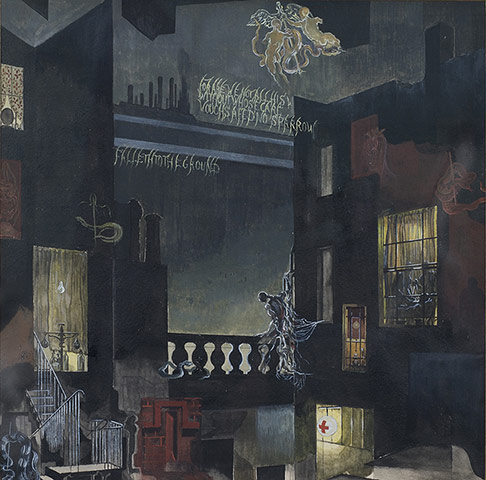 The title is a winner in itself: which patient among us hasn't dreamed of getting free, tearing off the drip, flitting past the nurses to the open air outside? But Ironside goes much further. His patient has turned himself into a Thin Man, slipped through the window and out on to the balcony by night. Soho, or something like it, beckons below, and in the sky above him a couple of baroque cherubs appear to be heralding his hard-won
The title is a winner in itself: which patient among us hasn't dreamed of getting free, tearing off the drip, flitting past the nurses to the open air outside? But Ironside goes much further. His patient has turned himself into a Thin Man, slipped through the window and out on to the balcony by night. Soho, or something like it, beckons below, and in the sky above him a couple of baroque cherubs appear to be heralding his hard-won 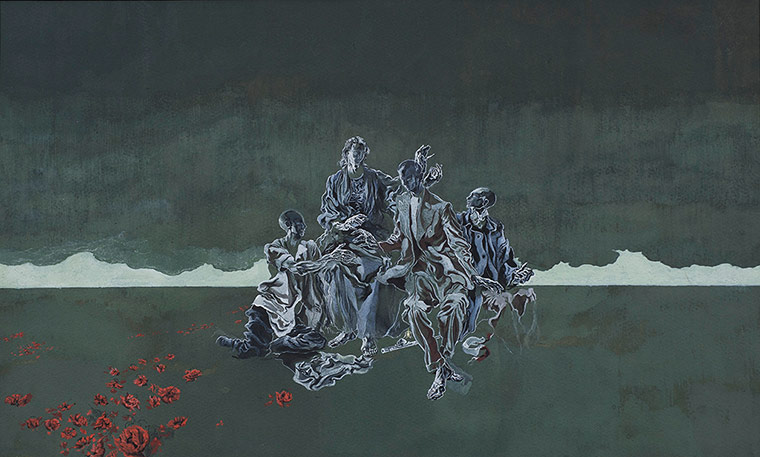 freedom.
freedom.It may be that death is the ticket out of hospital, but there is a mordant humour to Ironside's spectral vision. One way or the other, this is an out-of-body experience.
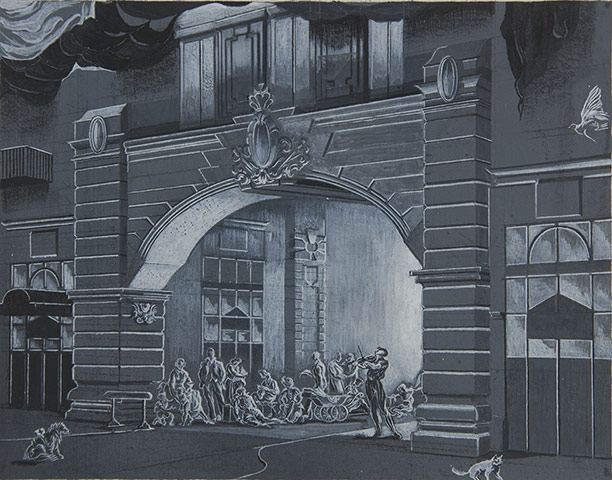
A crowd waits for a portent, men, women and children silently pressing together in an archway hoping for a sign from a mysterious stone altar in the centre of a courtyard. With its sharply raking perspective of classical buildings and terracotta tiles, the scene appears all set for the Renaissance but the performance is more Ionesco. The figures shiver with anticipation, but they will be waiting for ever for some sign to appear. They cannot see what we can: the mischievous, pipe-playing gargoyle.
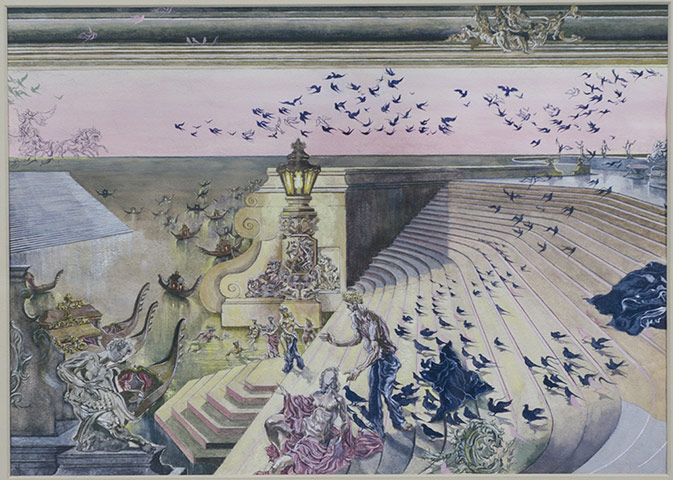
Ironside designed sets for ballet and opera and, to some extent, his pictures are consciously staged. But what is remarkable is the way he manages to suggest a sequence of receding flats – scenery behind scenery, as it were – and yet unite them in a single vista. Caves yield to arctic plains that yield to 18th-century parks as if they were all plausibly coexistent, bathed by the same silvery light.
This is not just late-flowering surrealism, the dreamscapes of the subconscious. It is more like a perpetual metamorphosis of the imagination. Elaborate tapestries morph into rocks, the stormy sea in a framed picture washes out in the room in which it hangs, hands turn into flowers. So that it seems, after a while, not at all unusual that words should hang in the air or that the opium eaters in Poppies should hover in green space, drifting in their own drug-induced dwam.
Ironside himself was addicted to Dr John Collis Browne's Chlorodyne, a mixture of opium, cannabis and chloroform.Chlorodyne was the name for one of the most famous patent medicines
 sold in the British Isles. It was invented in the 19th century by a Dr. John Collis Browne,
sold in the British Isles. It was invented in the 19th century by a Dr. John Collis Browne,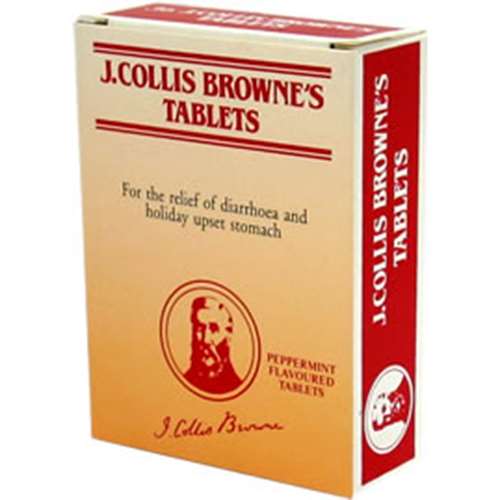 a doctor in the British Indian Army; its original purpose was in the treatment of cholera. Browne sold his formula to the pharmacist John Thistlewood Davenport, who advertised it widely, as a treatment for cholera, diarrhea, insomnia, neuralgia, migraines, etc. As its principal ingredients were a mixture of laudanum (an alcoholic solution of opium), tincture of cannabis, and chloroform, it readily lived up to its claims of relieving pain, as a sedative, and for the treatment of diarrhea.Though the drug was effective in many ways, its high opiate content also made it very addictive, and deaths from overdoses, either accidental or deliberate, became a frequent occurrence. A common feature of the coroner's report in such cases would be the description of the deceased's body being found in a flat or bedsit littered with empty Chlorodyne bottles. Over the decades of the twentieth century, the cannabis was removed from the formulation, and the amount of opiates in the medicine were progressively reduced. The name of Collis Browne lives on in Britain in a mixture sold under the trade name "J Collis Browne's Mixture" for the relief of coughs and diarrhea. This modern formulation contains morphine and peppermint oil
a doctor in the British Indian Army; its original purpose was in the treatment of cholera. Browne sold his formula to the pharmacist John Thistlewood Davenport, who advertised it widely, as a treatment for cholera, diarrhea, insomnia, neuralgia, migraines, etc. As its principal ingredients were a mixture of laudanum (an alcoholic solution of opium), tincture of cannabis, and chloroform, it readily lived up to its claims of relieving pain, as a sedative, and for the treatment of diarrhea.Though the drug was effective in many ways, its high opiate content also made it very addictive, and deaths from overdoses, either accidental or deliberate, became a frequent occurrence. A common feature of the coroner's report in such cases would be the description of the deceased's body being found in a flat or bedsit littered with empty Chlorodyne bottles. Over the decades of the twentieth century, the cannabis was removed from the formulation, and the amount of opiates in the medicine were progressively reduced. The name of Collis Browne lives on in Britain in a mixture sold under the trade name "J Collis Browne's Mixture" for the relief of coughs and diarrhea. This modern formulation contains morphine and peppermint oil It seems unlikely that he managed to paint while high: some of the details are so minute they required a single-hair brush. But he referred to his lost figures as "under the spell of some charming but vaguely dreaded hallucination", and this could stand as a description of the paintings themselves.
It seems unlikely that he managed to paint while high: some of the details are so minute they required a single-hair brush. But he referred to his lost figures as "under the spell of some charming but vaguely dreaded hallucination", and this could stand as a description of the paintings themselves.The ghosts of other artists steal in and out: El Greco's skies, extruded Dalíesque limbs, Watteau's wistful performers. But they seem present as if observed – along with blitzed streets, English meadows and violinists playing outside Victoria station – in some continuous vision of surprise. Look deep into the pictures, as their scale and density invites, and you too may be startled by what you find.
In an almost perfect exercise of compare and contrast, Pallant House Gallery is also showing paintings by Keith Vaughan. The two painters were exact peers, , both neglected, both drawn to modern myth-making and both part of the English neo-romantic scene in the late 30s (Ironside coined the phrase for this group of contemporaries).
But where Ironside is delicate and sometimes convoluted to the point of whimsy, Vaughan is solid and dark. His palette is sombre, his scenes are airless, impacted and generally inclined to tragedy.
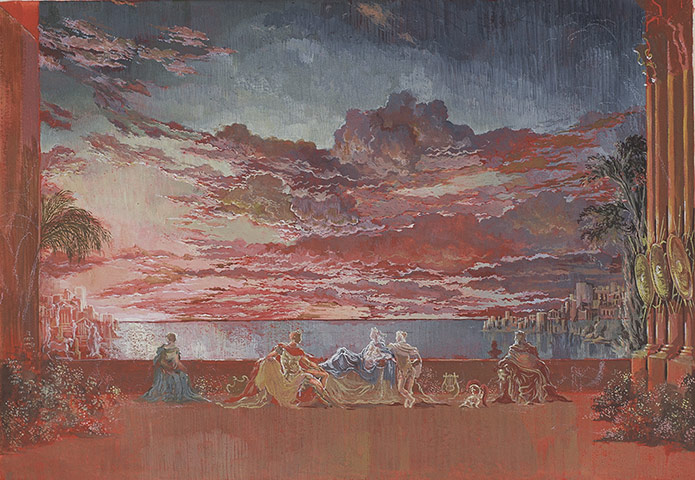
Two figures grapple on a beach, two heads lock together in a kiss as searchlights illuminate the war-shattered houses behind them. Two figures (they are almost always male nudes) are drawn together yet never quite meet. Tension – or at least some tension in the composition, the source is never quite clear – keeps them apart.
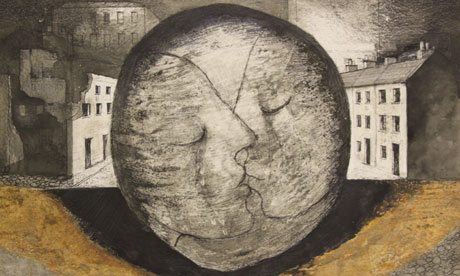 Night in the Streets of the City (detail), 1943 by Keith Vaughan. © the estate of Keith Vaughan/DACS 2012 The Return of the Prodigal Son, The Trial, Theseus: Vaughan's strongest paintings originate in old tales
Night in the Streets of the City (detail), 1943 by Keith Vaughan. © the estate of Keith Vaughan/DACS 2012 The Return of the Prodigal Son, The Trial, Theseus: Vaughan's strongest paintings originate in old tales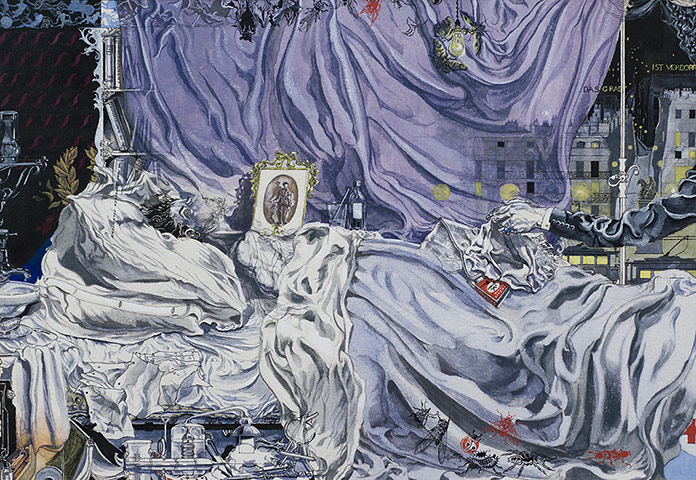 and archetypes. Indeed, with the exception of landscapes, and even here he can be quasi-abstract, he is leery of anything drawn directly from reality.
and archetypes. Indeed, with the exception of landscapes, and even here he can be quasi-abstract, he is leery of anything drawn directly from reality.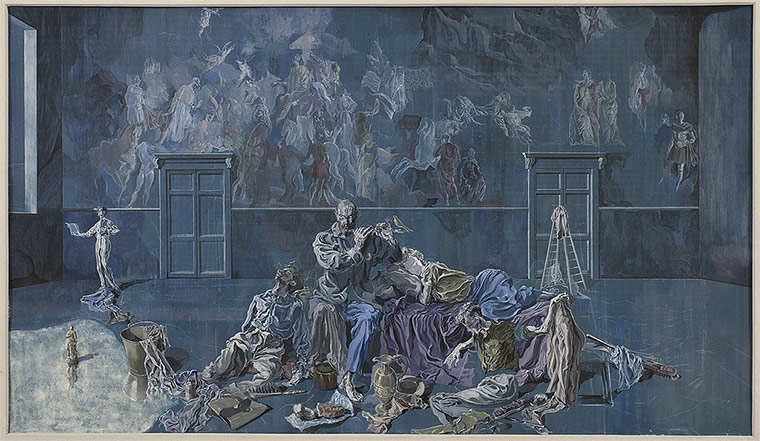 His men rarely have faces and sometimes lack heads. The sole portrait in the show – of a boy Vaughan adored – defies that definition altogether with its down-turned face. Only the catalogue indicates the subject's identity.
His men rarely have faces and sometimes lack heads. The sole portrait in the show – of a boy Vaughan adored – defies that definition altogether with its down-turned face. Only the catalogue indicates the subject's identity.It is extremely hard to catch the tone of individual works, but there is a presiding melancholy to the show. The paintings feel unfulfilled in their striving. Vaughan's diaries, which are remarkably clear-eyed and poignant, end at the exact moment of his suicide.
No comments:
Post a Comment